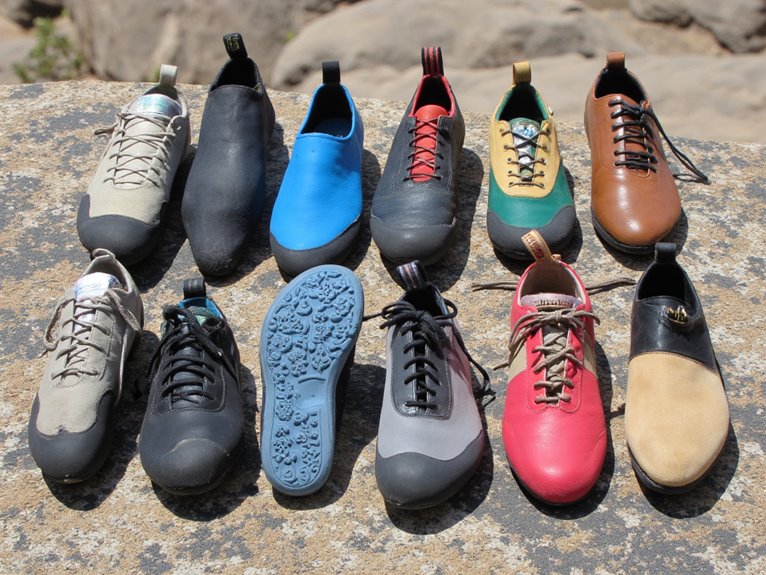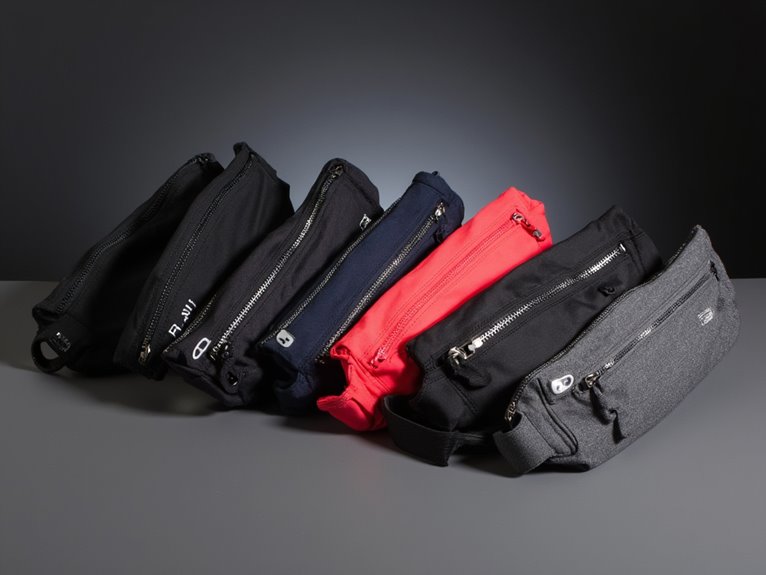What to Have in an Emergency Backpack?
A well-stocked emergency backpack should contain essential items to help individuals and families survive for at least 72 hours during unexpected disasters or crises. Pack personal documents, health and hygiene essentials, first aid and medical supplies, food and water, shelter and warmth tools, and safety and communication devices. Include copies of identification, insurance cards, and medical records, as well as basic first aid tools, sanitation supplies, and non-perishable food. Don't forget a tent, sleeping bag, and warm clothing for shelter, and a whistle, flashlight, and multi-tool for safety. And that's just the beginning – there's more to discover.
We are supported by our audience. When you purchase through links on our site, we may earn an affiliate commission, at no extra cost for you. Learn more. Last update on 29th December 2025 / Images from Amazon Product Advertising API.
Essential Documents and Papers
Three essential documents to include in your emergency backpack are copies of your identification, insurance cards, and birth certificate. These documents will help establish your identity, prove your insurance coverage, and verify your citizenship in case of an emergency. Make sure to laminate the copies to protect them from water and other environmental elements. Additionally, consider including copies of prescriptions, medical records, and emergency contact information. Organize these documents in a waterproof bag or folder to keep them safe and easily accessible. Having these essential documents in your emergency backpack will help you navigate unexpected situations with confidence and preparedness. By including these critical papers, you'll be better equipped to handle any crisis that may arise.
First Aid and Hygiene Kit
When assembling an Emergency Backpack, a well-stocked First Aid and Hygiene Kit is vital to provide prompt medical attention and personal cleanliness in the face of uncertainty. Within this kit, it's essential to include basic first aid tools, such as bandages, antiseptic wipes, and pain relievers, to treat minor injuries and prevent infection. Additionally, personal hygiene essentials like hand sanitizer, biodegradable soap, and toilet paper will help maintain personal cleanliness and prevent the spread of illness.
Basic First Aid Tools
What essentials should you include in your emergency backpack's First Aid and Hygiene Kit to prepare you for minor injuries and personal care on the go? A well-stocked kit can make all the difference in an emergency situation.
- Bandages and band-aids: Assorted sizes for wound coverage and protection.
- Antiseptic wipes: For cleaning and disinfecting wounds.
- Pain relievers: Such as acetaminophen or ibuprofen for minor aches and pains.
These basic first aid tools will help you respond to minor injuries and prevent infections. Remember to check expiration dates and restock your kit as needed to safeguard against future emergencies.
Personal Hygiene Essentials
In addition to basic first aid tools, a well-rounded emergency backpack should also include personal hygiene essentials to maintain cleanliness and prevent the spread of illness in emergency situations. A small supply of toilet paper, hand sanitizer, and biodegradable soap can go a long way in maintaining personal hygiene. Additionally, including a toothbrush, toothpaste, and any essential medications will help maintain oral health and overall well-being. Don't forget to pack a small supply of feminine hygiene products, if applicable. Remember to pack these items in airtight, waterproof bags to keep them dry and protected. By including these personal hygiene essentials, you'll be better equipped to handle emergency situations with confidence and dignity.
Food and Water Supplies
How much sustenance and hydration can you realistically carry in your emergency backpack to sustain you for at least three days? The answer lies in packing non-perishable, high-calorie foods that are lightweight and easy to prepare. Consider the following essential items:
- Energy-rich snacks: Trail mix, dried fruits, and nuts provide a quick energy boost.
- Ready-to-eat meals: Freeze-dried meals, canned goods, or MREs (Meals Ready to Eat) offer sustenance with minimal preparation.
- Water purification tablets: Protect access to safe drinking water by including tablets or a portable water filter.
Remember to pack these items in airtight containers to maintain freshness and protect against the elements. A well-stocked emergency backpack should provide enough nutrition and hydration to sustain you for at least 72 hours, thereby guaranteeing your survival.
Shelter and Warmth Essentials
When disaster strikes, having a reliable shelter and warmth system is vital for survival. In this section, we'll delve into the essential items to include in your emergency backpack to safeguard you from the elements. From tent and tarpaulin to sleeping bag and pad, and fire starters and fuel, we'll cover the must-haves to keep you safe and warm in the face of uncertainty.
Tent and Tarpaulin
What constitutes an effective emergency shelter, and how do you balance portability with durability in your tent and tarpaulin choices? In an emergency situation, a reliable shelter can be a lifesaver. When selecting a tent and tarpaulin, consider the following essential factors:
- Water resistance: Look for tents and tarpaulins with waterproof ratings to keep you dry in harsh weather conditions.
- Portability: Opt for lightweight and compact designs that won't weigh you down during evacuation.
- Durability: Choose materials that can withstand harsh winds and rough handling, ensuring your shelter remains intact.
Sleeping Bag and Pad
In addition to a reliable shelter, a warm and comfortable sleeping system is vital for survival, making the right sleeping bag and pad a essential component of your emergency backpack. A good sleeping bag should be insulated, water-resistant, and rated for the expected low temperature of your region. Look for one with a comfort rating of at least 20°F (-7°C) lower than the expected low temperature. A sleeping pad provides extra insulation and comfort. Choose a pad with an R-value of at least 3.5 for cold climates. Consider an inflatable pad for its lightweight and compact design. Remember to pack your sleeping bag and pad in a waterproof bag to keep them dry in case of rain or snow.
Fire Starters and Fuel
A reliable fire starter and sufficient fuel are essential components of a well-stocked emergency backpack, as they provide a means to start a fire for warmth, light, and signaling in a survival situation. When selecting fire starters and fuel, consider the following essential items:
- Waterproof matches: A trusty backup in case your primary fire starter fails.
- Lighter or firesteel: A reliable and compact way to ignite a fire in any weather.
- Tinder and kindling: Dry, fluffy materials that ignite easily, such as dryer lint, cotton balls, or small twigs.
These items will facilitate starting a fire quickly and efficiently, even in harsh conditions. Always store them in a waterproof container to keep them dry and ready for use, thereby guaranteeing they will be functional when needed.
Safety and Communication Tools
Every emergency backpack should contain a carefully curated selection of safety and communication tools to facilitate that individuals can respond effectively in high-stress situations. A whistle, for instance, is a simple yet effective tool for signaling for help. A flashlight or headlamp provides essential light during nighttime or in dark environments. A first aid kit, though not exclusively a safety tool, should also be included to address minor injuries. Additionally, a multi-tool or pocket knife can aid in a variety of tasks. A portable charger for your phone guarantees communication devices remain functional. Furthermore, a two-way radio or satellite phone can facilitate crucial communication with the outside world. These essential items will improve your ability to respond to emergencies efficiently.
Personal and Sanitary Items
Three essential personal and sanitary items to pack in an emergency backpack are a water filter or purification tablets, a supply of toilet paper, and a small cache of biodegradable soap. These items may seem minor, but they can make a significant difference in comfort and hygiene during an emergency.
- Water purification tablets or filter: Provide access to safe drinking water.
- Toilet paper and hand sanitizer: Maintain personal hygiene and prevent the spread of illness.
- Biodegradable soap: Keep yourself and your gear clean without harming the environment.



